If you want to draw realistic creatures from imagination, you have to be familiar with animal anatomy. It’s a fascinating subject, but it can be overwhelming for a beginner. Where should you even start? The best method, in my opinion, is to pick a part of the body, find a photo of it, and try to draw everything hidden under the skin.
But how would you know what’s under the skin? There are many resources you can use to find out. The problem is, it’s hard to find something by Googling, if you don’t even know what you’re searching for. That’s why in this article I’ll share the resources that I’ve been using over the years for my animal anatomy studies. Most of them are free!
WARNING: graphic content.
The Weatherly Guide to Drawing Animals
When studying the anatomy, you have to pay attention to a lot of muscles and bones separately. But then, once you try to put them all together, you may totally lose the sense of proportions and the dynamism of an animal body.
That’s why it’s good to start big, and then slowly dive into the details. This book is great for it—it introduces you to proportions and forms of an animal body in a very practical way. Just re-draw all the illustrations and you’ll be well equipped to go deeper!
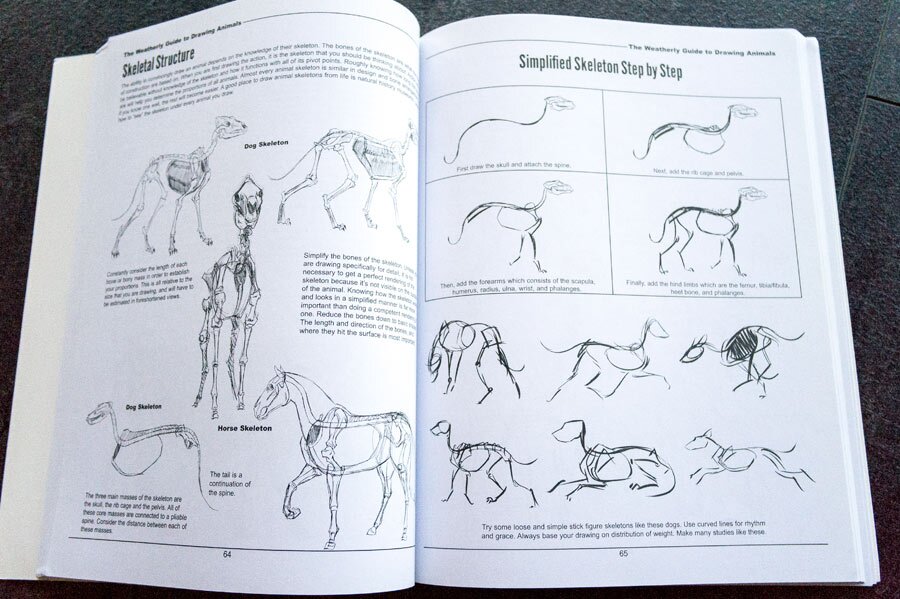
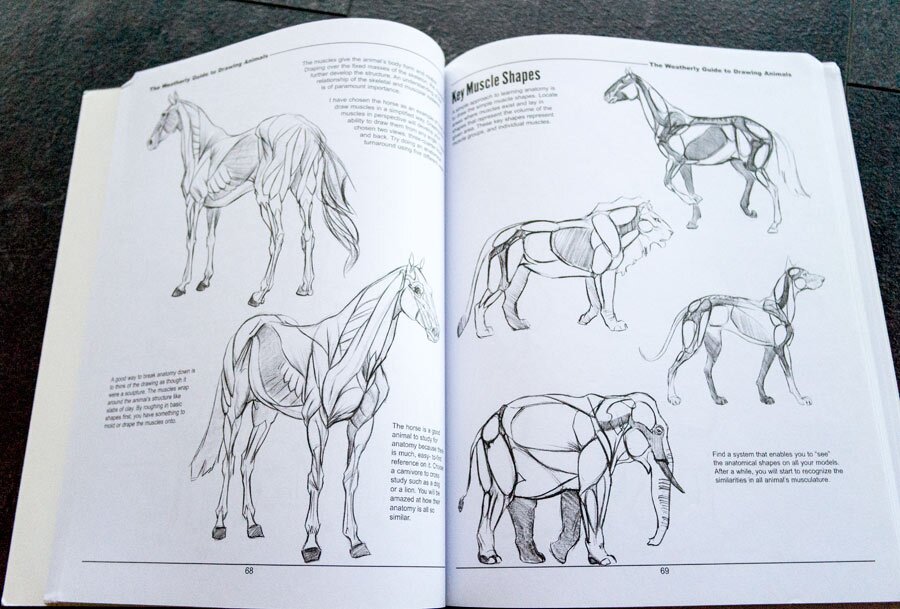
3D Skeleton
Bones are like scaffolding for the muscles, so even though they’re hidden, you should familiarize yourself with them. This simple online app will help you see the 3D form of the canine skeleton—and it’s totally free!
Unfortunately, this one is no longer available, but if you’re interested in bones, you will find this collection very useful.
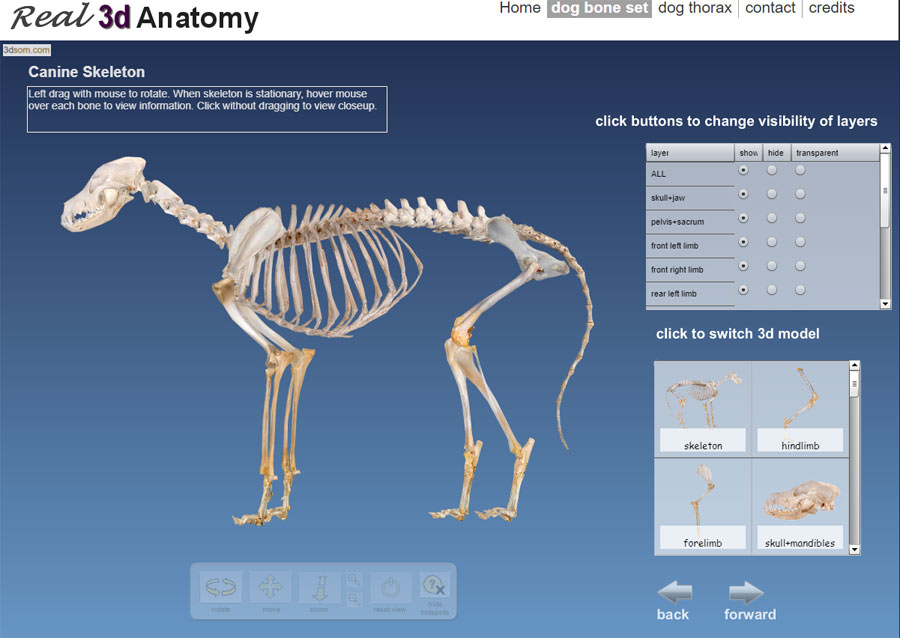
And here’s something similar for a feline skull, although you need a special viewer to see it.
Another great source of materials for less popular species: https://www.morphosource.org/
Animal Anatomy for Artists: The Elements of Form
This is the best book for advanced studies. It has skeleton and muscle diagrams of various species in various views (side, front, back, top), but that’s what a lot of atlases give you. This one is special, because it describes every visually important muscle… separately.
Sometimes it’s hard to see the shape of a muscle in a general diagram, where it’s partially covered by other muscles. So this books lets you perform a virtual dissection and observe the muscle on its own. And whatever can’t be shown in the image, is described in the accompanying text.
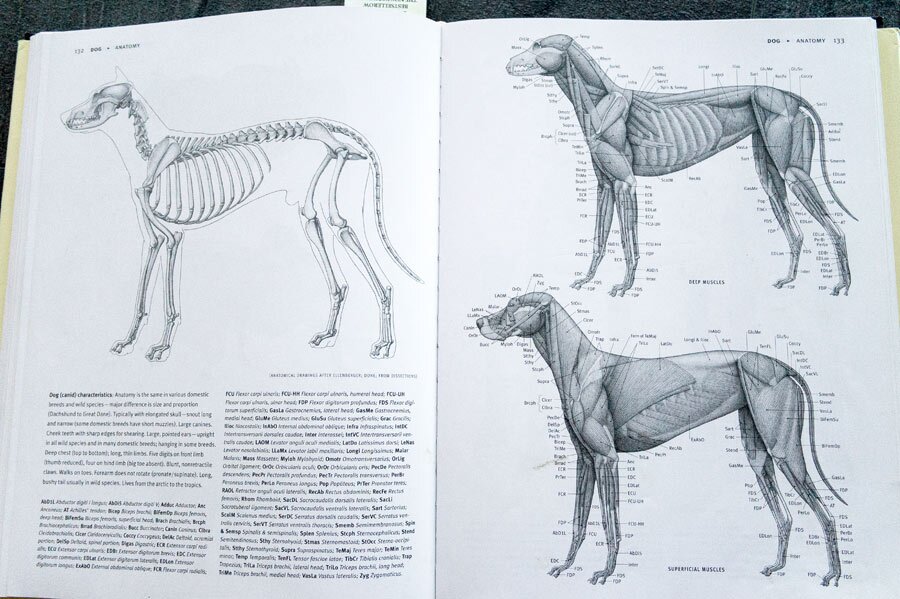
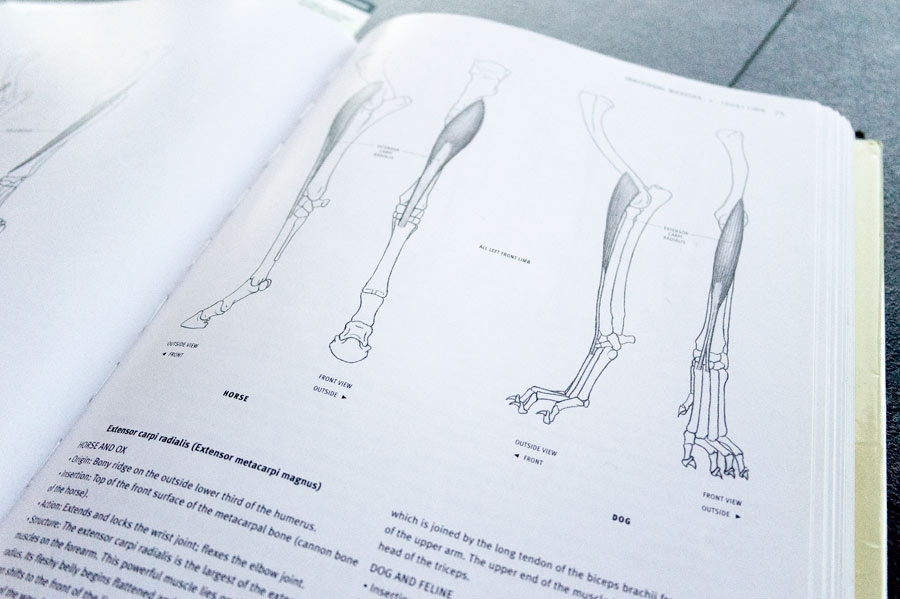
This book is quite pricey, but it’s very worth it. However, I first found out about it when I stumbled upon the images from it that someone has scanned and posted online. There are plenty of them on this website, which also seems to contain the text (click “next page” at the bottom to go to another page). Although it’s quite cumbersome, you can use it as a demo version of the book to decide if it’s useful enough to buy it.
An Atlas of Animal Anatomy for Artists
Looking for something cheaper? This atlas is a classic and it didn’t get outdated at all! Even the author of that former book used it as a reference. You won’t find separate illustrations for every muscle here, but you’ll find the basic resources: beautiful illustration of various animals in various views, including illustrations of details that you won’t find in the Goldfinger’s version (like a turnaround of the leg, or close-up view of the paw).
The whole book can be found online, for example here, but having a physical book makes studying easier in my opinion. When buying it, make sure you’re buying the older version, as the newer one (2014) has too dark illustrations.
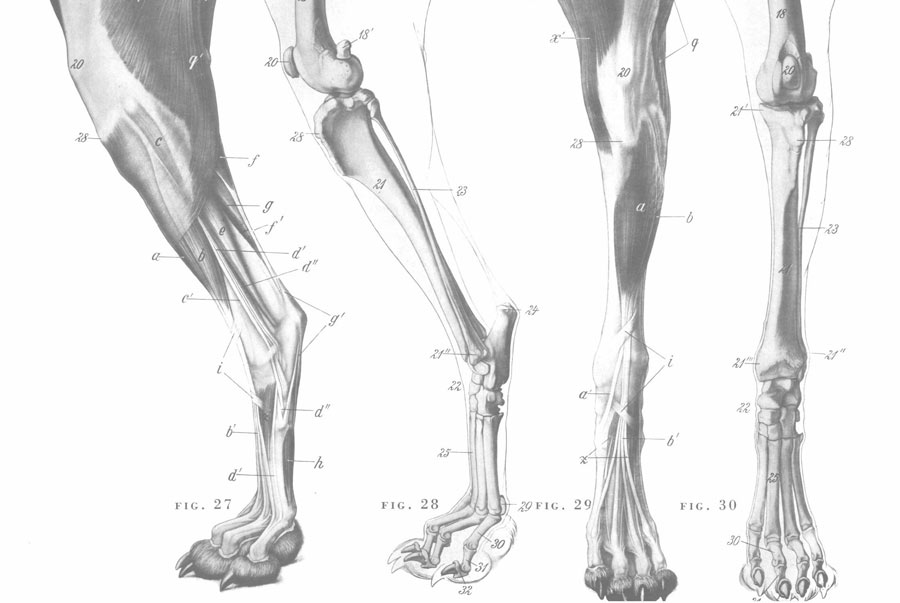
Online Canine Anatomy Atlas
This may be even better than a book: it’s like a slideshow showing you all the muscles together and separately, with nice, clean illustrations made by someone who really knew their job. You can use this amazing atlas for free—but you need to pay if you want to see the labels.
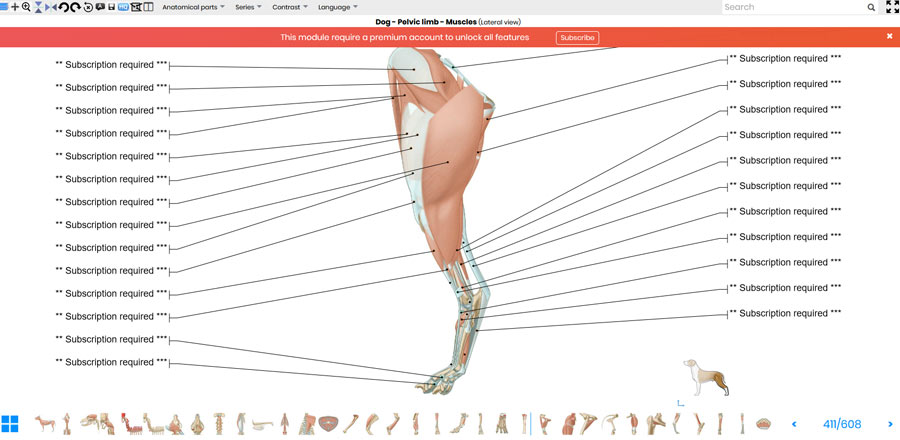
Taxidermy Forms and Hairless Animals
Anatomy atlases are a great source of knowledge, but they have one big flaw: they ignore everything that covers the muscles. This makes sense, because how else would you study the musculature? However, remember what you’re studying it for: you want to draw realistic animal bodies. And animal bodies are complete with fat, skin, ligaments…
So after you learn all the muscles, you may still not be able to draw a realistic animal. You’ll need to study something else—something that shows you the form of the body, normally hidden under the fur.
Did you know that taxidermists often use sculpted forms for their creations? These forms present the shape of an animal without fur, because fur is supposed to be added later. They’re perfect—they have no distracting details and they’re shaded in a clear way. So where’s the catch? It may be hard to find a good quality photo of the species you need.
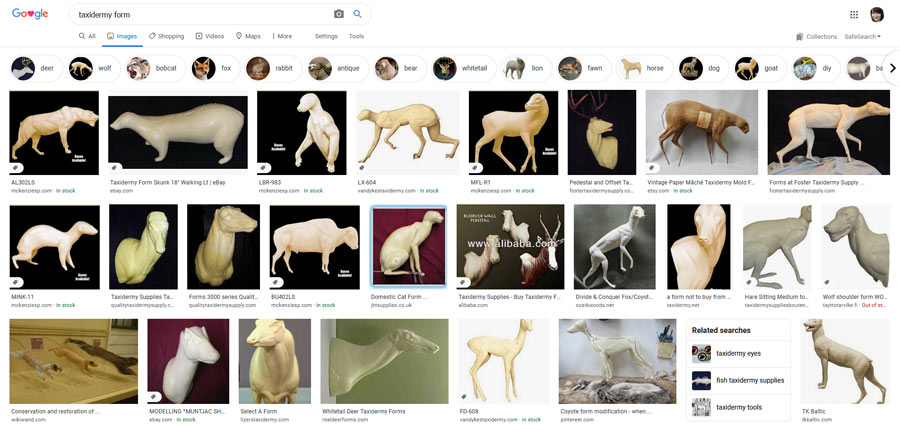
Similarly, you can search for photos of hairless animals. There are hairless breeds of cats and dogs, and many animals go bald when sick. These images are especially useful for studying paws.
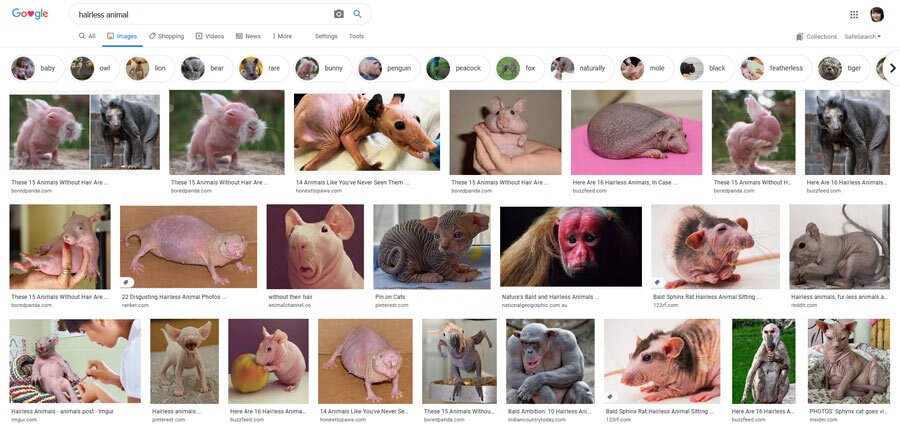
There’s one more great resource, but it’s pretty controversial. Photos of skinny/starving animals can show you the exact position of the bony landmarks, but they can be pretty distressing to look at. If you’re not able to distance yourself mentally from these images, don’t force yourself to study them.
Dissection Videos
But sometimes after studying the skin level and the muscle level something still doesn’t seem right. The muscle diagrams, no matter how detailed, are just drawings—and you want to draw something real. So if you want to see the real form of the muscles, it’s best to view a dissection.
Dissection videos are the next best thing after attending a real dissection. You can see the body at different angles and really see the form and proportions. Also, many of them are narrated, and the professor shows the muscles separately.
The only problem is, many people find such an imagery quite disturbing—you’re looking at a dead, skinned cat or dog. And I can’t really help you with that, if you feel this way. I can only say that I used to find such images revolting as well, before I got interested in animal anatomy. Learning about muscles from the books left me with so many questions, that once I saw my first dissection video, I was at awe with all the answers I was suddenly given. Also, with time you learn to see the beauty of anatomy, and you have no reason to look away.
If you worry about animals being used this way, remember that veterinary students need to learn about animal bodies to treat our pets. This is necessary, nobody does it for fun. Also, the dissected animals are not killed for this purpose—they’re always donated after death from some other cause. When you watch these videos, you’re not profiting from anyone’s suffering.
So, where to find these videos? YouTube would be my first choice. I’ve created a playlist of a couple of videos that I personally found the most useful, but once you start watching them, YouTube will start recommending more.
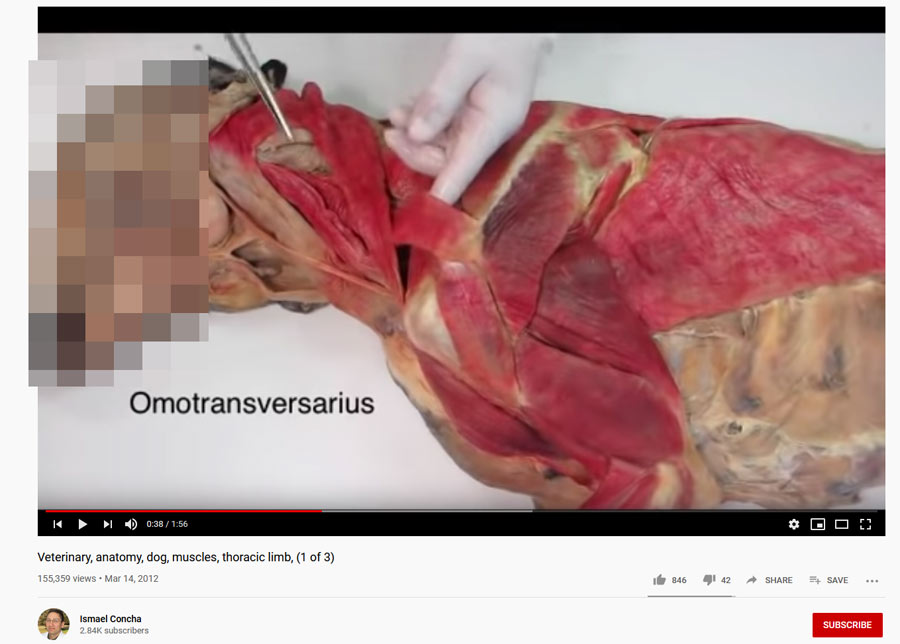
3D Computed Tomography
There’s one more problem with dissections—they show you a dead animal, and dead muscles are often flat and, well, lifeless. It would be great to look inside a live animal, but it’s not possible. Or is it? Let me show you the wonder of modern technology: 3D Computed Tomography.
3D Computed Tomography allows you to see the inside of the animal in color, at every angle. You can see the muscles attached to the skull, knowing that this is how they really look under the skin. It’s a perfect reference for animal artists!
But it’s a little too good to be true. Images from scans like this are hard to find online. However, I found a cool website with a gallery full of animal CT scans! I spent many days studying them, and they’re responsible for my understanding of a big cat head. Give it a try—you’ll love it!

3D Écorché
An écorché is an artwork created to study the musculature of a subject. Many artists create 3D écorchés to be better at sculpting, and you can use their work for your own reference. The one I linked to here is one of the best I’ve seen, and sometimes it can be bought as a 3D print here.
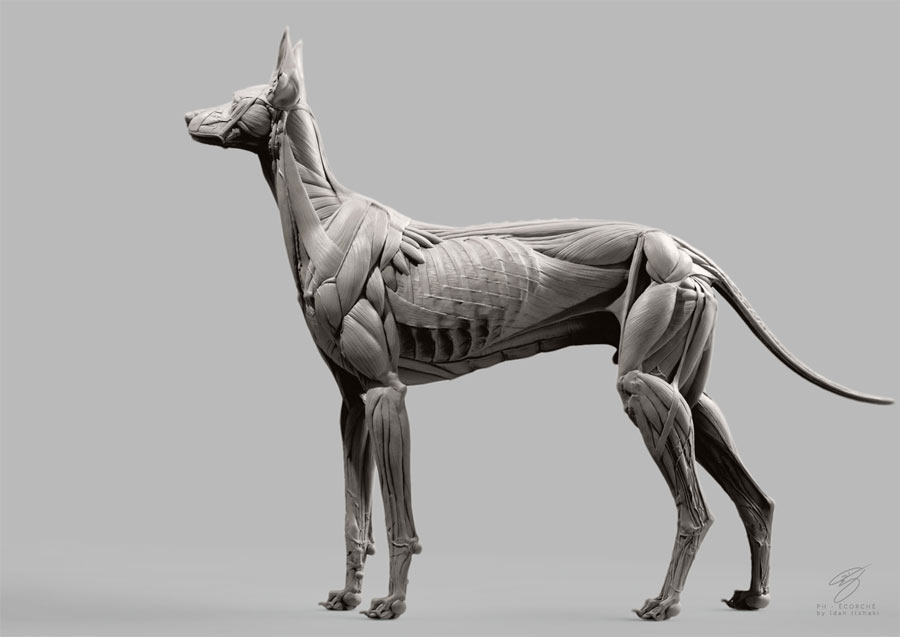
And here’s something for fans of felines. You can buy it as a 3D model to rotate and dissect manually—available here.
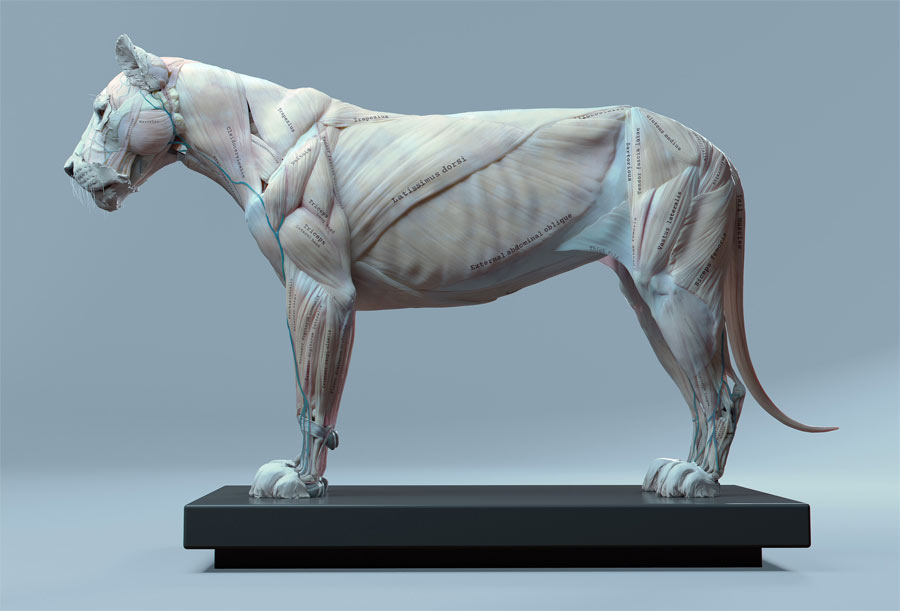
3D Animal Anatomy
There are special apps created for veterinary students, providing a 3D model of an animal that you can dissect virtually. It really helps understand parts that look confusing in 2D drawings. I’ve used this app myself, and while the muscles don’t look very detailed, you can clearly see their shape, as well where they attach.
You can use a limited version of this app for free, but you need to pay if you want to see all the muscles.

Many artists use Pinterest to create collection of references. You can use them, as long as they’re public. Mine is—it includes all the resources I’ve described here, as well as many more.
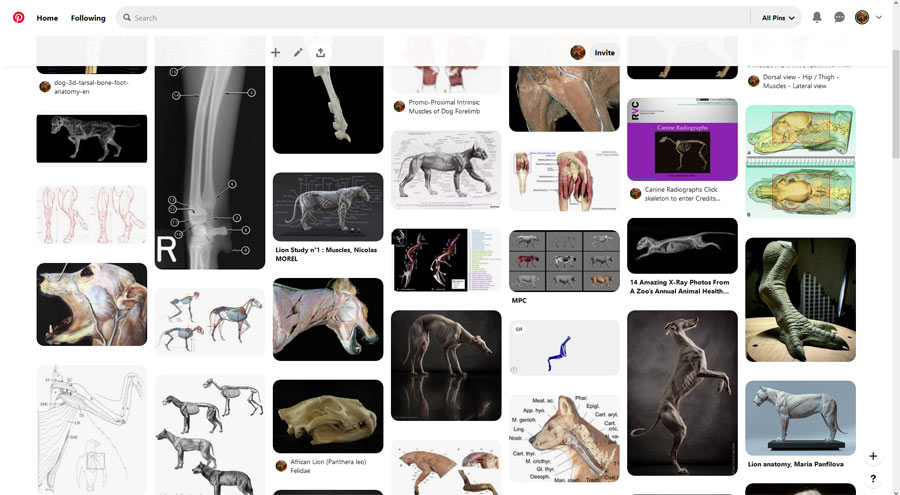
Didn’t I Forget About Something?
You might have noticed that this list is focused mostly on canines. There’s a reason for it—the dog is the animal that veterinary students use as a model for animal anatomy. Knowing canine anatomy will be the most useful for them in the future, and once they know it, they can understand other animals too, by analogy.
You can also find a lot of materials for horses, because in the past they were very important to us, but that’s it—if you want to learn about crocodiles, or birds, or bats, you won’t find that many resources. But here’s some good news—you can learn by analogy. We are all pretty similar on the inside—we all have the biceps, the triceps, the pecs and abs, and all of this is attached to the same bones. You only need to modify the shape, but it’s something you can learn from the surface view.
Also, the truth is you don’t have to know all these muscles by heart. Artists study anatomy to understand how the surface form is created, to gain full control over it. So study the anatomy, use this knowledge to create simplified recipes for animal bodies, and then feel free to forget about the exact placement of the brachioradialis—if you even need this detail again, the muscle diagrams are still there.
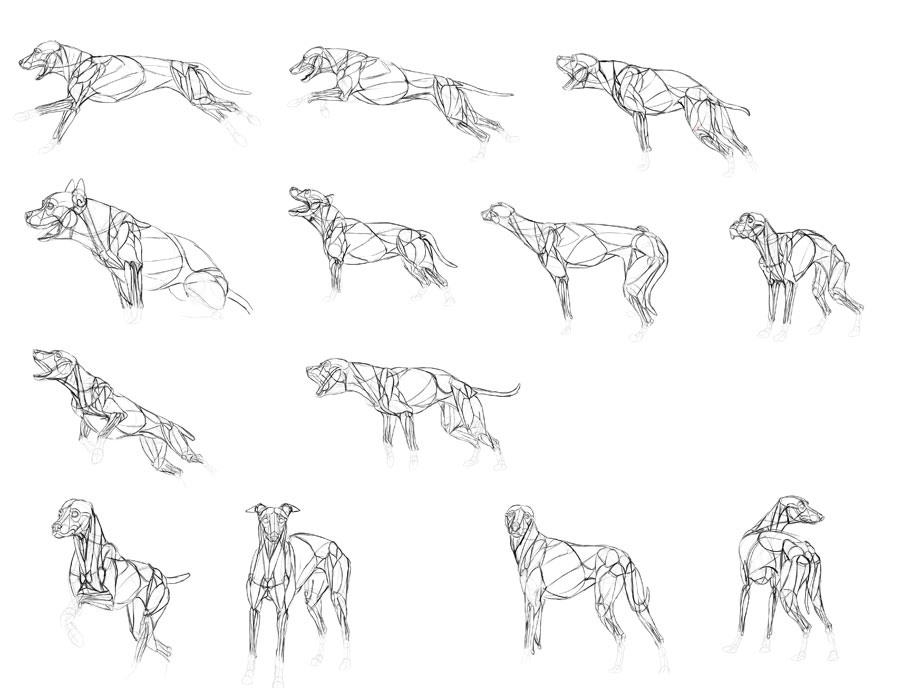
One last thing: you can use any photo you want to draw the anatomy on. However, if you want to post the whole image online (photo + lines), you need to have the copyright to do it. That’s why it’s safer to use free stock photos from sites like Pixabay or Unsplash.

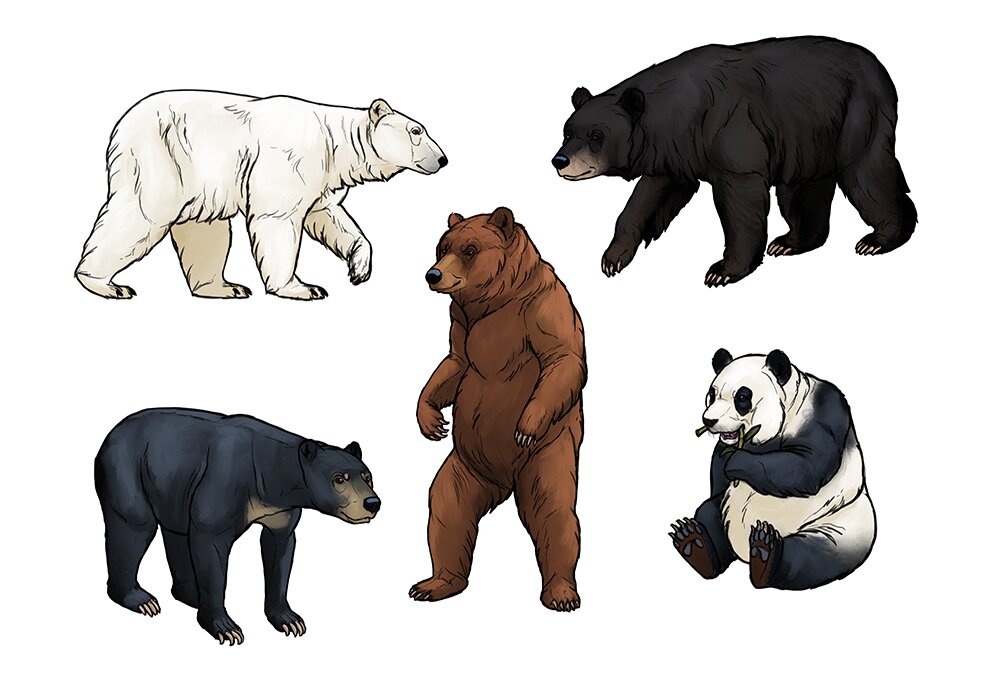
4 Comments